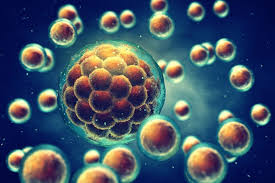
Breaking News
 The Tenpenny Files with Patrick Byrne
The Tenpenny Files with Patrick Byrne
 What Just Happened With Ron Paul Changes EVERYTHING (You're Witnessing History)
What Just Happened With Ron Paul Changes EVERYTHING (You're Witnessing History)
 Piers Morgan CLASHES with Candace Owens During On-Air Firestorm Interview:
Piers Morgan CLASHES with Candace Owens During On-Air Firestorm Interview:
 House Passes Bill to Prosecute Doctors and Parents for Sex Changes for Children...
House Passes Bill to Prosecute Doctors and Parents for Sex Changes for Children...
Top Tech News
 This tiny dev board is packed with features for ambitious makers
This tiny dev board is packed with features for ambitious makers
 Scientists Discover Gel to Regrow Tooth Enamel
Scientists Discover Gel to Regrow Tooth Enamel
 Vitamin C and Dandelion Root Killing Cancer Cells -- as Former CDC Director Calls for COVID-19...
Vitamin C and Dandelion Root Killing Cancer Cells -- as Former CDC Director Calls for COVID-19...
 Galactic Brain: US firm plans space-based data centers, power grid to challenge China
Galactic Brain: US firm plans space-based data centers, power grid to challenge China
 A microbial cleanup for glyphosate just earned a patent. Here's why that matters
A microbial cleanup for glyphosate just earned a patent. Here's why that matters
 Japan Breaks Internet Speed Record with 5 Million Times Faster Data Transfer
Japan Breaks Internet Speed Record with 5 Million Times Faster Data Transfer
 Advanced Propulsion Resources Part 1 of 2
Advanced Propulsion Resources Part 1 of 2
 PulsarFusion a forward-thinking UK aerospace company, is pushing the boundaries of space travel...
PulsarFusion a forward-thinking UK aerospace company, is pushing the boundaries of space travel...
 Dinky little laser box throws big-screen entertainment from inches away
Dinky little laser box throws big-screen entertainment from inches away
 'World's first' sodium-ion flashlight shines bright even at -40 ºF
'World's first' sodium-ion flashlight shines bright even at -40 ºF
Regenerative drug summons stem cells for inflammation-free healing

The technique could be a boon for regenerative medicine to treat neurological disorders.
Inflammation is the body's natural response to injury and damage, swelling up to allow better blood flow to the area. It also acts like a "fire alarm" to attract the attention of the immune system to help the healing process, and stem cells are some of the most important responders.
In theory, inflammation could be used to lure these regenerative stem cells to injuries, but of course there are risks. Chronic inflammation underlies conditions like arthritis, multiple sclerosis and Crohn's disease, and has even been linked to cardiovascular diseases, Alzheimer's and depression.
So for the new study, the researchers investigated ways to summon stem cells using inflammation signals without creating further inflammation. The team modified an inflammatory molecule called CXCL12, which had previously been identified as a stem cell attractor. They found that it contains two "pockets" – one that binds to stem cells and one for inflammatory signaling – so they developed a drug that maximizes the binding but minimizes the signaling.
The end result is a drug they call SDV1a, which is designed to be injected almost anywhere in the body to lure stem cells there to begin healing an injury, without causing inflammation.



